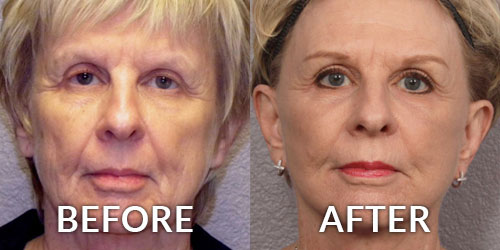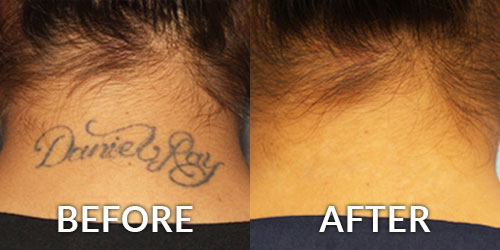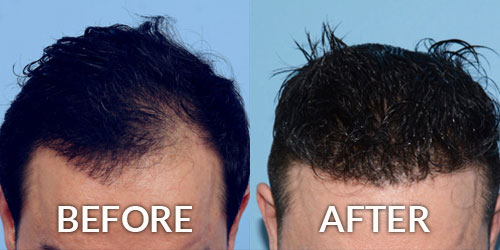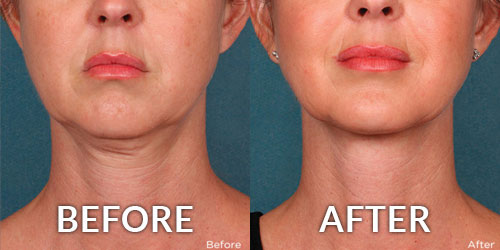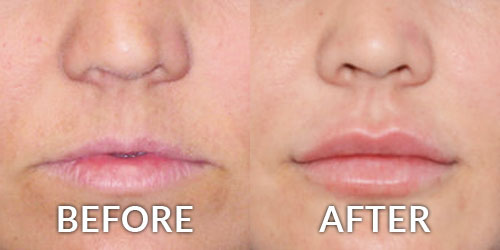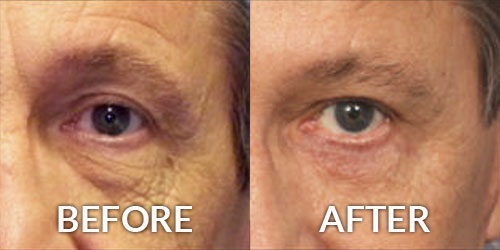Skin Lesions
Consultations offered at our two convenient locations in Phoenix and Scottdale
Skin lesions are areas on the skin that differ from the surrounding uniform, healthy skin. The term “lesion” broadly refers to skin irregularities that include harmless moles, blisters, and rashes. However, not all skin lesions are harmless. If you’ve noticed an unusual growth or sore, it’s vital to seek medical attention. There are many different kinds of skin lesions with a variety of causes. An experienced dermatologist will be able to identify the skin irregularity, suggest treatment, and offer crucial insight into the potential causes. If left untreated, certain lesions have the potential to worsen, spread, cause permanent scarring or become infected and severely jeopardize your overall health.
If you’re concerned about an unusual spot on your skin, don’t delay addressing it. At Phoenix Skin, we offer a full array of dermatological and aesthetic services to keep your skin healthy and beautiful. Dr. Lee Laris heads an accomplished team of Physicians Assistants, Nurse Practitioners, and Licensed Aestheticians. Contact us to schedule an appointment today. Call 602-222-9111 to reach our Phoenix office, or 480-473-9111 for our Scottsdale location.
Contents
About Skin Lesions
The word lesion comes from the Latin word for injury: laesionem.
Skin lesions, regardless of their location on the body are often the indicators of an injury.
However, the causes of skin lesions are usually more than skin deep. Lesions are most commonly the result of a bacterial or viral infection. They can also result from autoimmune disorders, or be an indicator of other illnesses. It’s important to always seek a medical diagnosis for any unusual skin condition. But regardless of the cause of the lesion, many lesions can become further injured when their location subjects them to frequent contact. There are two grades of lesions, primary lesions, which occur as the result of a health condition, and secondary lesions. Secondary lesions occur when the initial lesion becomes further aggravated by bumping, scratching, or other trauma. Proper removal and care can prevent lesions from progressing into more serious health conditions.
Lesions can progress and develop into the following conditions:
- Crusts: forms after blood dries over a lesion that has been scratched and irritated.
- Ulcers: an open sore that is the result of an infection or injury, and is slow to heal.
- Scale: rough patches of skin that harden and then flake off.
- Scars: some injuries undergo a healing process that results in raised, discolored, and thicker skin. In extreme cases, these scars develop into keloids.
If you’re suffering from a skin lesion, you’re right to be concerned. It’s important to rule out the possibility of skin cancer, which can be devastating if left undiagnosed and untreated. There’s no time to waste when it comes to your skin. Schedule an appointment at Phoenix Skin today. You’ll enjoy the peace of mind that comes from being proactive about your health.
Common Locations of Lesions
Ear Lesions
Lesions on the ears can form as the result of previous trauma such as piercings, or from issues with the underlying vascular system. Vascular lesions are raised bumps that have a blood supply and need to be removed and biopsied. They can appear anywhere on the ear. (1)
Keloids can result from ear piercing and other injuries to the ear. Abnormal wound healing can lead to large and unsightly growths that need to be carefully removed or treated with injections of a medication to reduce inflammation. (2)
Eye Lesions
The eyelid is a common place for small growths. Eyelid growths called chalazion occur when a gland on the eyelid becomes blocked, and a lump forms under the skin of the eyelid. While these can often resolve on their own, surgical intervention or prescription medication may be required. (3)
Genital Lesions

Lesions that appear on the penis or vulva are usually the sign of an infection, although certain penile growths are benign and even common. There are a variety of other sexually transmitted diseases that can also cause genital lesions. If you’re experiencing lesions on your genitals or anus, it’s crucial to get tested for sexually transmitted diseases, which can be devastating if left untreated and spread to future sexual partners. And while genital lesions can be uncomfortable and embarrassing, many of the diseases that cause them can be cured or managed with prescription medication, which also avoids the occurrence of future outbreaks.
HPV
Human Papilloma Virus is the prevalent virus that causes warts, and when sexually transmitted, can result in warts that appear on the penis or vulva. Unfortunately, there’s no cure for HPV, but bothersome warts that develop in the genital area can be removed. Depending on the extent of the warts, they can be frozen off with cryotherapy, surgically excised, or treated with medication for removal.
Pearly penile papules
These small growths typically appear around the head of the penis. While they are common and harmless, many men find their appearance aesthetically undesirable and opt to have them removed.
Psoriasis
Psoriasis can affect nearly any area of the skin, including the genital area. Discoloration, scaling, and itching can make this an extremely uncomfortable condition when it affects the genitals.
Although rare, cancers of the vulva and penis can result in lesions.
If you’re suffering from any kind of lesion in this sensitive area, don’t delay seeking medical attention. (4) Other skin lesions that affect the genital area include epithelial lesions such as prurigo nodularis, the formation of hard itchy lumps. Those with seborrheic keratosis experience waxy, scaly growths. Infectious lesions include the symptoms of syphilis; molluscum contagiosum (a viral infection that causes quickly-spreading bumps) and viral warts. Vascular lesions such as capillary aneurysm, hemangioma, lymphangioma, and pyogenic granuloma can also occur in the genital area. Some skin lesions are the sign of malignant skin tumors such as basal cell carcinoma and squamous cell carcinoma. (5)
Benefits
Treating skin lesions in a timely manner has many important short and long term benefits:
- Eliminates uncomfortable symptoms like itching
- Reduces the risk of further infection and scarring
- Identifies the cause of the lesion
- Prevents lesions from spreading
Candidates
If you’re concerned about a wound, growth, or unusual area of skin, it’s important to get diagnosis and treatment immediately. Lingering skin lesions can be indicators of a health condition, and can point to the presence of a serious illness. Other lesions may be harmless, but if left untreated can become aggravated and worsen. To learn more about the dermatological services that Phoenix Skin offers, follow our blog!
Personal Consultation
During your personal consultation at Phoenix Skin we will carefully examine your skin lesion. A biopsy of the unusual area may be performed and other tests can be run in order to determine the cause of your skin lesion. Many of the infections that cause skin lesions can be treated with medication. However, many viral infections cannot be cured. They will remain in the body, but medication can control the symptoms. Understanding the cause of the skin lesions will help the team at Phoenix Skin to design a personalized treatment plan that delivers optimal results. Once the ideal course of action has been identified, our team will review the details of your treatment and let you know exactly what to expect before, during, and after the procedure.
Lesion Treatment Procedure
At Phoenix Skin, there are a variety of resources available for treating skin lesions. We will select the appropriate method of addressing your skin lesion based on your unique skin, the size and location of the lesion, and its underlying causes.
Laser Therapy and Electrosurgery
Lasers are an invaluable tool in medicine today. They can be used to treat the symptoms of psoriasis, remove growths, and smooth the appearance of large scars.
Cryotherapy
Cryotherapy is often used to remove growths like warts. This technique uses liquid nitrogen, which exposes the area to freezing temperatures, which causes the targeted skin cells to die. This is frequently how warts are removed.
Excision
In some cases, the lesion needs to be surgically removed. A surgeon uses a scalpel to access and remove the lesion at the root. This also allows the lesion to be further examined, to rule out the possibility of cancer. The biopsied skin is analyzed under a microscope to identify any usual cellular activity.
Results
Treating skin lesions is an important way to take control of your health. Since lesions are most commonly a symptom of an infection, it’s critical to identify and treat the underlying condition.
How Much Does it Cost to Treat Skin Lesions in Phoenix?
The cost of treating skin lesions depends on the condition of the lesion, its location on the body, and the method used to do so. The doctors at Phoenix Skin will create a treatment plan tailored to your needs to achieve the best results. You will be given an accurate estimate of the cost of your skin lesion treatment after it has been evaluated at your personal consultation.
References
- Scarfì F, Silvestri F, Trane L, Gori A, Venturi F, De Giorgi V. An Ear with Multiple Vascular Lesions: Does Dermoscopy Offer Any Hints? The Journal of Clinical and Aesthetic Dermatology. 2021;14(3):30-31. Accessed August 2, 2021. https://www.ncbi.nlm.nih.gov/pmc/articles/PMC8021403/
- Ojeh N, Bharatha A, Gaur U, Forde AL. Keloids: Current and emerging therapies. Scars, Burns & Healing. 2020;6:205951312094049. doi:10.1177/2059513120940499
- Arbabi EM, Kelly RJ, Carrim ZI. Chalazion. BMJ. 2010;341(aug04 1):c4044-c4044. doi:10.1136/bmj.c4044
- Teichman JMH, Sea J, Thompson IM, Elston DM. Noninfectious Penile Lesions. American Family Physician. 2010;81(2):167-174. Accessed August 2, 2021. https://www.aafp.org/afp/2010/0115/p167.html
- Cohen PR, Celano NJ. Penile Angiokeratomas (PEAKERs) Revisited: A Comprehensive Review. Dermatology and Therapy. 2020;10(4):551-567. doi:10.1007/s13555-020-00399-3


